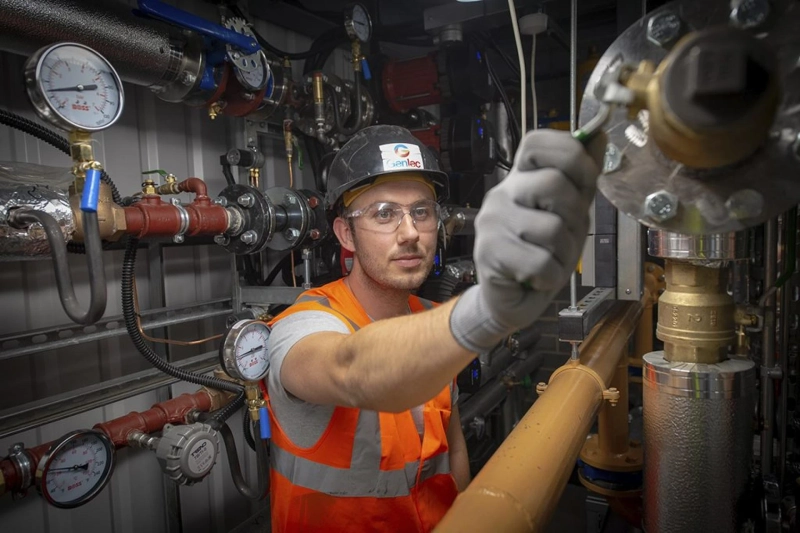In the realm of construction, the intricate coordination of Mechanical, Electrical, and Plumbing (MEP) services plays a pivotal role in shaping the functionality, efficiency, and sustainability of buildings. These behind-the-scenes systems form the backbone of a structure, ensuring its optimal performance, comfort, and functionality for occupants.
Understanding the Crucial Role of MEP Services
Mechanical Systems: Climate Control and Ventilation
Mechanical systems encompass heating, ventilation, and air conditioning (HVAC). These systems regulate indoor temperatures, humidity levels, and air quality. Efficient HVAC designs not only provide comfortable environments but also contribute significantly to energy efficiency.
Electrical Systems: Power Distribution and Connectivity
Electrical systems manage power distribution, lighting, and connectivity within buildings. From lighting fixtures to complex electrical networks, their design and implementation influence both energy consumption and the overall functionality of a structure.
Plumbing Systems: Water Management and Conservation
Plumbing systems handle water distribution, drainage, and waste removal. Water-saving fixtures, efficient drainage designs, and wastewater treatment systems are vital components that ensure responsible water management and conservation.
Integrating Efficiency and Performance
Energy Efficiency and Conservation
Optimizing MEP systems significantly impacts a building's energy footprint. Efficient HVAC systems, smart lighting, and renewable energy integration are integral in reducing energy consumption and operational costs while minimizing environmental impact.
Indoor Comfort and Air Quality
Properly designed MEP systems ensure optimal indoor air quality and comfort. Adequate ventilation, humidity control, and air filtration are crucial for creating healthy and conducive indoor environments that promote productivity and well-being.
Sustainability and Green Building Practices
MEP services play a pivotal role in achieving sustainable building certifications. Implementing renewable energy sources, water-efficient plumbing, and energy-saving electrical systems align with green building standards and environmental stewardship.
The Art of MEP Design
Precision Planning and Design Coordination
MEP design demands meticulous planning and coordination. Close collaboration between architects, engineers, and contractors ensures seamless integration of these systems within the building's structure without compromising aesthetics or functionality.
Advanced Technologies and Innovations
The evolution of technology has revolutionized MEP service. From sophisticated building management systems to energy-efficient equipment and renewable energy solutions, innovations continuously enhance building performance and sustainability.
Compliance and Regulations
Adherence to building codes, safety standards, and environmental regulations is imperative in MEP design. Compliance ensures that MEP systems are not only efficient but also meet legal requirements, promoting occupant safety and environmental responsibility.
Impact on Building Performance
Cost-Efficiency and Operational Savings
Investing in quality MEP service results in long-term cost savings. Efficient systems reduce operational expenses through lower energy consumption, minimal maintenance, and optimized resource utilization.
Occupant Satisfaction and Productivity
Well-designed MEP systems directly impact occupant satisfaction and productivity. Comfortable environments with optimal air quality and lighting contribute to higher satisfaction levels and enhanced performance among occupants.
Environmental Responsibility and Reputation
Buildings equipped with sustainable MEP systems project an image of environmental responsibility. Such structures gain positive recognition, attract environmentally conscious occupants, and contribute positively to a company or community's reputation.
Leveraging Advanced Technologies
Building Automation Systems
The integration of sophisticated building automation systems revolutionizes MEP services. Automated controls, sensors, and data analytics optimize building operations, ensuring real-time adjustments for energy efficiency and system performance.
(Internet of Things) Integration
The advent of devices enhances MEP service by enabling connectivity and data exchange among various systems. Smart devices and sensors offer insights into energy usage patterns, enabling proactive adjustments for efficiency.
Predictive Maintenance
Utilizing predictive maintenance techniques through data analytics and machine learning minimizes downtime and enhances system reliability. By forecasting potential issues, MEP services can schedule maintenance proactively, preventing costly breakdowns.
Sustainable MEP Designs
Net-Zero Energy Strategies
MEP services are central to achieving net-zero energy goals. Advanced energy modeling, renewable energy integration, and energy-efficient designs contribute to buildings producing as much energy as they consume.
Passive Design Principles
Passive design strategies incorporated into MEP service optimize natural lighting, ventilation, and thermal comfort. These strategies reduce reliance on active systems, enhancing energy efficiency and occupant comfort.
Evolving Building Regulations
Emphasis on Energy Performance
Stringent regulations prioritize energy performance in buildings. MEP service must comply with energy codes and standards, encouraging the adoption of energy-efficient systems and technologies.
Environmental Compliance
MEP designs must align with environmental regulations, promoting sustainability and responsible resource management. Compliance ensures buildings meet eco-friendly benchmarks, reducing environmental impact.
Integrated Design Approaches
Collaborative Design Processes
Integrated MEP designs foster collaborative efforts among architects, engineers, and contractors. Early-stage coordination ensures seamless integration of systems, minimizing conflicts and optimizing functionality.
Holistic Building Performance
MEP service aim for holistic building performance, considering the interplay between various systems. Harmonizing mechanical, electrical, and plumbing systems maximizes efficiency and operational effectiveness.
Conclusion
The intricacies of MEP services are fundamental in shaping the performance, efficiency, and sustainability of buildings. ENGISOFT ENGINEERING - BIM Staffing & BIM Services their integration and seamless operation ensure optimal functionality, comfort, and environmental responsibility, making MEP service an indispensable art form in the world of construction.


